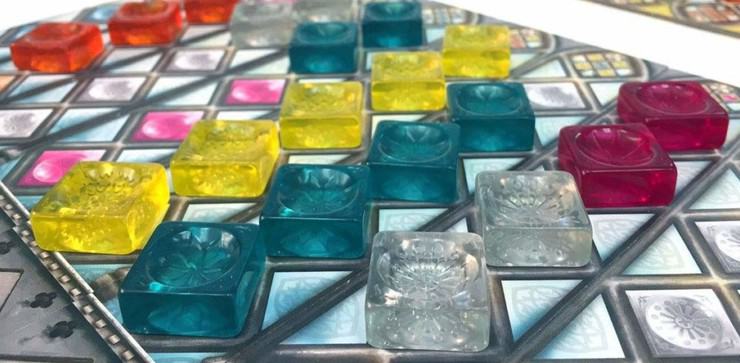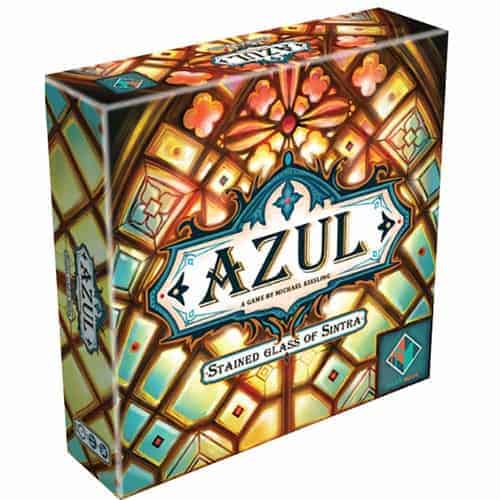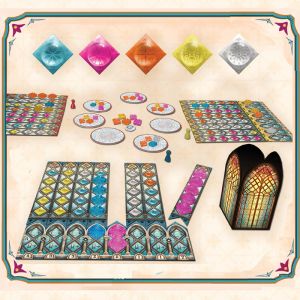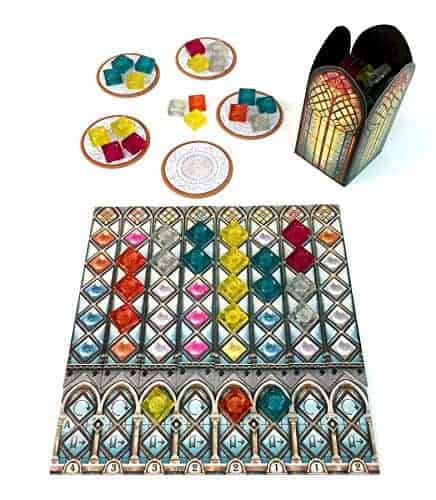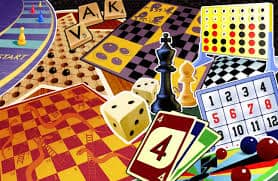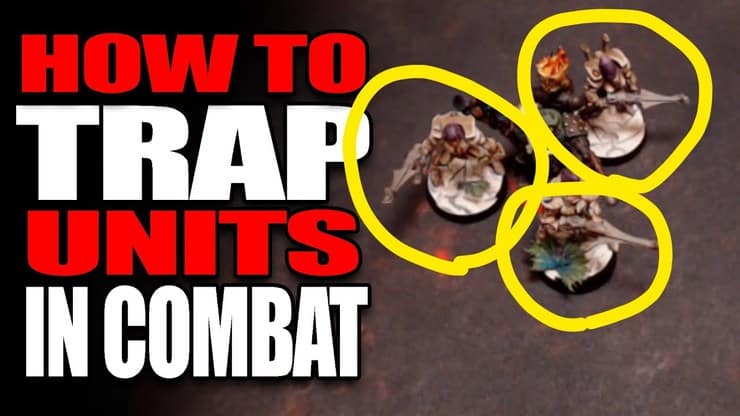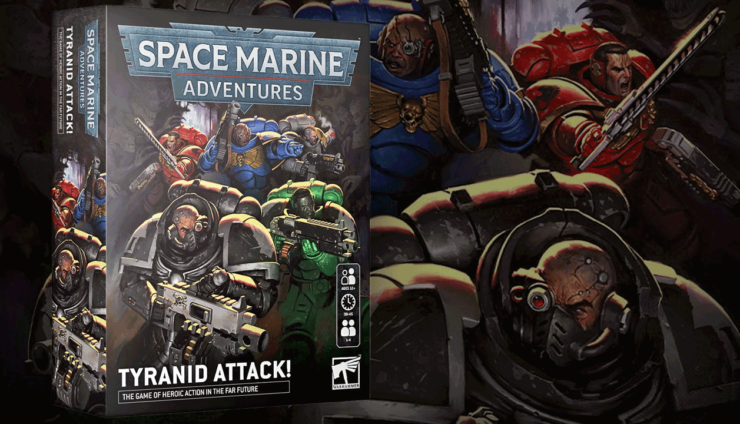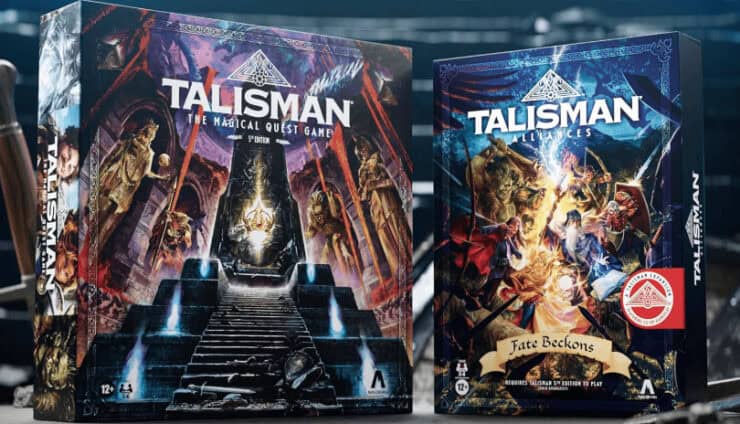Looking for a visually stunning game to get your game night rolling? Check out Next Move Games’ latest Azul: Stained Glass of Sintra!
Azul: Stained Glass of Sintra is a 2-4 player game designed once again by Michael Kiesling and published by Next Move Games. A typical game can be played in 30 to 40 minutes. Unlike the original Azul, the game ends after six rounds rather than a gameplay trigger.
Azul: Stained Glass of Sintra: $39.99
Get Yours For Less From Miniature Market!
After furnishing the Palace of Evora, King Manuel I of Portugal now seeks to commission the world’s greatest stained glass artisans to adorn the windows of the Royal Palace in Sintra.
As a stained glass artisan, this is a once in a lifetime opportunity to demonstrate your exquisite abilities for king and country. Will you be the best at creating the most beautiful stained glass in all of Portugal?
Welcome back to the world of Azul!
Contents:
9 Factory Displays
4 Palace Boards
32 Pattern Strips
4 Glaziers
8 Markers
100 Pane Pieces
1 Scoring Board
1 Staring Player Tile
1 Glass Tower
1 Bag
1 RulebookAges: 8+
Players: 2-4
Game Length: 30-45 minutes
Azul: Stained Glass of Sintra Stuns Game Nights
In the original Azul you are installing ceramic tiles to embellish the palace walls. This time we are creating panes of beautiful stained glass. While this may sound similar to another fantastic game, Sagrada, this plays more like Azul but with a twist.
Each round of Azul players will take one of two actions a turn. The first action is to select all the glass tiles of a matching color from one of the factories. The ones you don’t take go to the center of the table with the first player marker. Then you choose a pane either under or to the right of your glazier pawn. If you place to it’s right, you will move it over to the new pane. On the pane, you move to place all the glass tiles you picked from the factory. Any excess glass will be put into the tower and broken. Breaking glass will cause negative points. You can also choose to take from the middle and first to do so takes the first player marker and breaks the glass.
Each time you complete a pane you take one tile and drop it down into your display to show it’s done. After the first time, a pane is finished you flip the pane over for a new pattern. The second time a pane is just removed.
There are two end game scoring variants in Azul. The A side involves having tiles grouped around the star symbols at the bottom of your display. A full group of four is worth ten points. That is basically two side by side panes completed twice to achieve this. The B side is more strategic. You take the color you have the most of and multiply it by the number of completed panes you have.
My overall thoughts are that I really loved the original Azul, and this one is similar yet, different enough to warrant owning both. They share a few of the same mechanisms. But, that’s where the similarities end.
The component quality is outstanding and I love the “glass” tiles. They are very colorful and pretty. The game’s designers made a single scoreboard for all players rather than one for each. That was a big improvement to me. The tile bag is very high quality and sturdy. The glass tower is a good touch for storing used and broken glass. The original Azul utilized the box lid for this purpose. The tower makes for less of a tablespace footprint.
I definitely recommend this even if you own the original. This one is a gamer’s game version of the original. Same simple play yet more decisions to make. Definitely feels like a more complex version of the award-winning original. I would say this one is ideal for beginners as well as veteran board gamers. Hope you get to check this one out.
